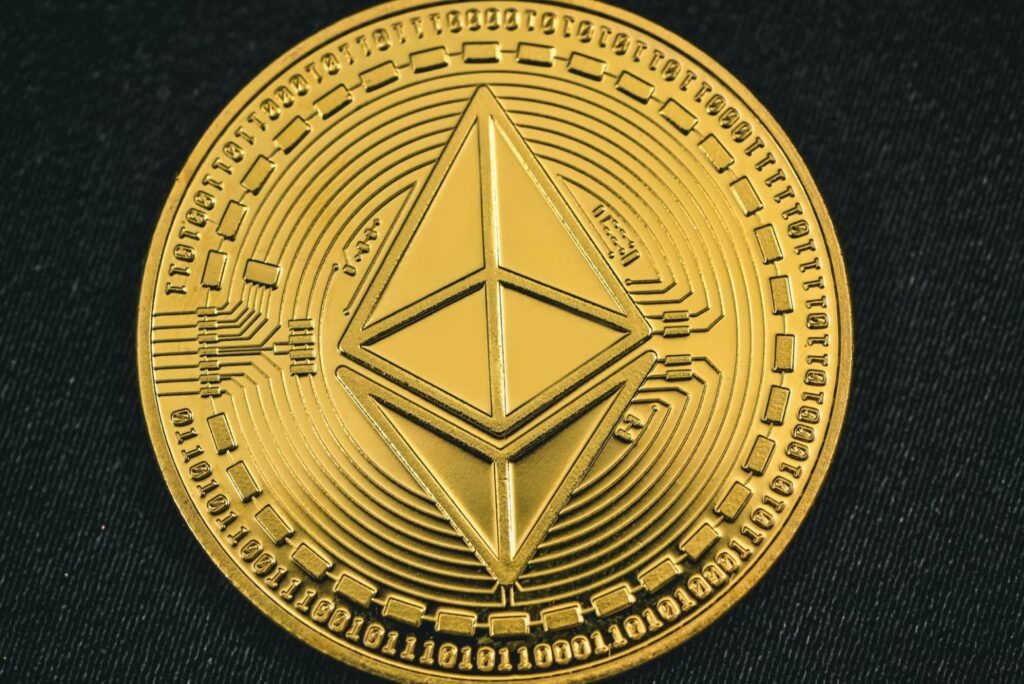Ethereum has been wildly popular since its inception in 2015, but recently its expensive transaction fees and low scalability have had a negative effect on the execution of complex applications, and user demand for Ethereum ETH -0.80% improvements has become increasingly urgent. Ethereum 2.0 has been in the works for some time now, and it is the biggest change to the Ethereum network in years and is designed to address some of the issues with the current infrastructure. According to Ethereum founder Vitalik Buterin, the upgrade will accelerate the functionality of the Ethereum blockchain and advance mass adoption. This article will review the basic features of Ethereum 2.0 and explore what changes the upgrade will bring to the system.
What is Ethereum 2.0?
Ethereum 2.0 is not a one-time upgrade, but a series of changes to the network that will be completed over the next few years. Currently, Ethereum still uses the same PoW proof-of-work consensus mechanism as Bitcoin BTC 0.43%. Although this mechanism is highly secure and decentralized, it has some obvious flaws. In PoW blockchains, miners need to use high computing power to solve complex cryptographic problems (competing for the right to verify transactions), so on-chain transactions are slow. In addition, the competition for computing power increases electricity consumption, which is why Bitcoin is attacked by environmentalists.
Ethereum 2.0 will use the PoS proof-of-stake consensus mechanism. Under this mechanism, verifiers do not use computing power to solve mathematical puzzles to verify transactions, but instead need to lock the blockchain’s native cryptocurrency in a smart contract. The network then randomly selects validators by analyzing a number of factors, including stake size and duration. Currently, the beacon chain, the testbed for Ethereum 2.0, has more than 290,000 validators. According to the current plan, the number of validators will continue to grow after the merger of the Ethereum network and the beacon chain in June this year.
Ethereum 2.0 is one of the most anticipated developments in the history of the blockchain community. If all goes according to plan, Ethereum may solve its scalability problems, increase accessibility for ordinary users, and enhance the functionality of decentralized applications.
Ethereum 2.0 will bring the following 5 changes:
Lower transaction fees
High gas transaction fees are the biggest problem with Ethereum right now. The gas fee refers to the fee paid to miners who consume computing power in validating transactions. It is measured in “gwei” and fluctuates according to network demand. Typically, the Ethereum blockchain gets blocked as soon as there is a high demand for transactions. In this case, miners will prioritize transaction requests with higher gas prices, driving up the overall gas transaction fee. As Ethereum moves to a PoS proof-of-stake mechanism, processing transactions will become simpler, which will effectively prevent unprocessed transactions from clogging the network.
Increase network throughput
Part of the Ethereum 2.0 upgrade includes the introduction of “sharding”. Sharding will split the blockchain into multiple chains that can process transactions independently of the main chain.
PoW blockchains record transactions on a complete chain, such as the Bitcoin blockchain, where the transaction history since the genesis block was mined in 2009 is recorded on the chain. However, the number of transactions that can be processed on a chain is limited. Bitcoin can only handle 7 transactions per second, while Ethereum can only process 10-15 transactions per second.
Sharding will create newer chains on top of the existing main chain. According to the Ethereum Foundation, the sharding process divides the Ethereum blockchain into 64 different chains. Since these chains can all be used to verify transactions, the burden on the Ethereum main network will be reduced and the throughput of the entire ecosystem will be significantly improved.
Reduce hardware requirements
When Satoshi Nakamoto designed Bitcoin, he wanted everyone to participate in the verification and recording system of transactions. However, changes in the system have made the threshold for ordinary people to participate in network verification very high. The increase in mining difficulty means that expensive advanced computers must be invested to guarantee computing power, and the current Ethereum is also facing the same problem.
In addition, nodes must also hold a copy of the blockchain records, which requires nodes to store approximately 4TB of data. At current market prices, a computer with more than 4TB of storage costs about a few thousand dollars. The high threshold of equipment is not conducive to attracting more qualified verifiers to participate in the protection and construction of the network.
The introduction of the PoS consensus mechanism in Ethereum means that verifiers no longer need advanced equipment with powerful computing power, and only need server-level equipment to verify transactions. Also, sharding will reduce the amount of disk space allocated to store the history of the Ethereum blockchain. Since Ethereum will have 64 shard chains in the future, the validator only needs to save the history of one of the shards, which is 1/64 of the total data.
Expand the Ethereum ecosystem
In addition to acting as a payment settlement system, Ethereum’s programmability can be used to create smart contracts and decentralized applications (dApps) that power industries such as NFTs and DeFi. The Ethereum EVM is like a supercomputer, running on different computers (nodes) in the Ethereum network. The EVM stores the code that executes smart contracts and allows users to interact with dApps.
Although the EVM has greatly improved the network capabilities of Ethereum, its usefulness has declined in recent years due to the increasing pressure on the ecosystem. Compared with the birth of Ethereum in 2015, the number of dApps running on its network is already very large, including games (Axie Infinity, CryptoKitties), DeFi protocols (Uniswap UNI -2.22%, Yearn) and DAO (MakerDAO) and so on.
The ever-increasing load on the EVM caused the network processing speed to drop dramatically. However, improving the EVM is difficult because the code is written in Solidity, a complex programming language. According to major players in the development of the Ethereum network, Ethereum 2.0 will introduce the Ethereum Web Assembly (eWASM) designed by the World Wide Web Consortium to replace the EVM.
eWASM lets developers choose other simpler coding languages, such as C++ and Rust. Additionally, eWASM is designed to be compatible with current web standards, so it is easier to run in regular browsers. This will make it easier for users to access dApps from the browser without relying on browser extensions. The biggest benefit of eWASM is its impact on the developer ecosystem, with additional language options, more developers will flock to Ethereum, further fostering innovation and creativity in the community.
Reduce carbon footprint
Ethereum’s move to a PoS proof-of-stake consensus mechanism will reduce power consumption and reduce negative environmental impacts. In fact, the energy-intensive nature of PoW proof-of-work such as Bitcoin and Ethereum 1.0 has already raised concerns among environmentalists and regulators. According to the official Ethereum blog, PoS will reduce the power consumption of Ethereum by 90-95%. Additionally, other scaling solutions such as rollup and sharding will also reduce the overall energy cost of transactions by expanding the economies of scale of the network.
Ethereum 2.0 progress
According to the information released by the Ethereum Foundation, Ethereum 2.0 can be divided into three stages:
Stage 0
Phase 0 begins after the launch of the Beacon Chain on December 1, 2020. The Beacon Chain has introduced the Proof of Stake consensus. To be a complete validator, you need to pledge at least 32 ETH. Currently, the total value locked (TVL) of the beacon chain is around $25 billion. The Beacon Chain will merge with the Ethereum mainnet in the second quarter of 2022. After the merger, the entire Ethereum network will switch to the PoS consensus mechanism.
Phase 1
According to the Ethereum Foundation’s plan, Phase 1 will happen later in 2022 or sometime in 2023. The upgrade at this stage will introduce sharding, but code development and auditing are more difficult, so the specific time will be adjusted according to the actual situation.
Phase 2
The final phase of Ethereum 2.0 involves replacing the Ethereum Virtual Machine (EVM) with Ethereum Web Components (eWASM). This will make Ethereum easier for users and developers to access. For users, the built-in browser support will make the use of decentralized applications more convenient. For developers, the freedom to use other languages will make application development on the Ethereum blockchain easier.
Is Ethereum 2.0 the ultimate solution?
While the success of Ethereum 2.0 is still unknown, the many changes and overall signs that the Ethereum 2.0 upgrade will bring are relatively positive. The upgrade, if successfully implemented, will completely change the fundamentals of Ethereum. With lower gas fees, higher accessibility, and a better user experience, Ethereum is likely to become the leader in blockchain technology.






